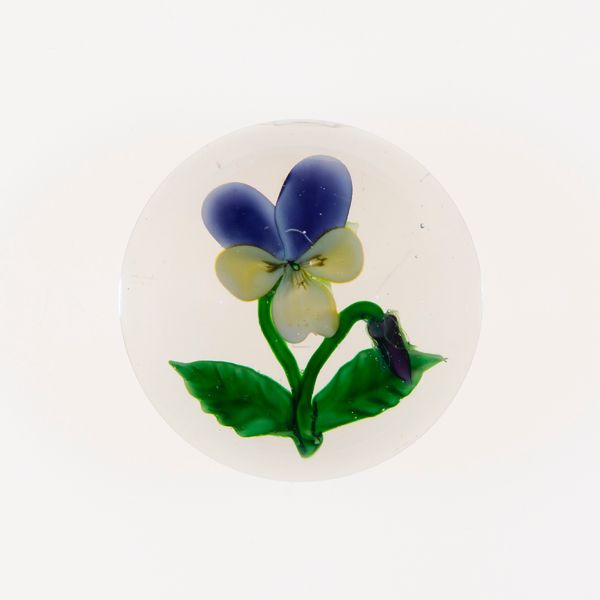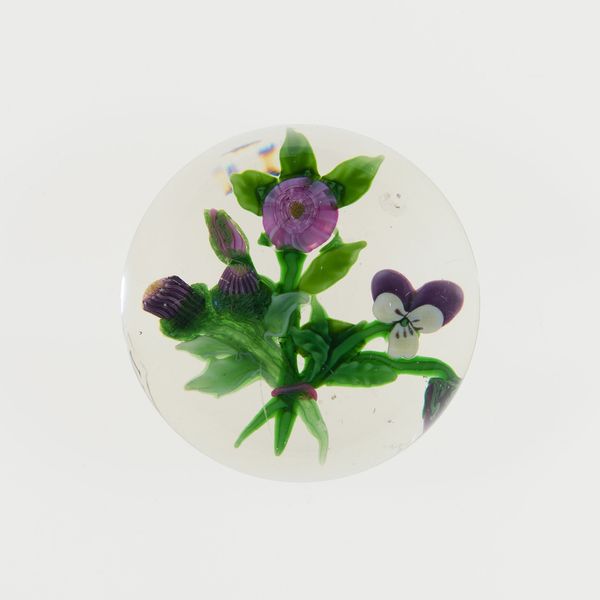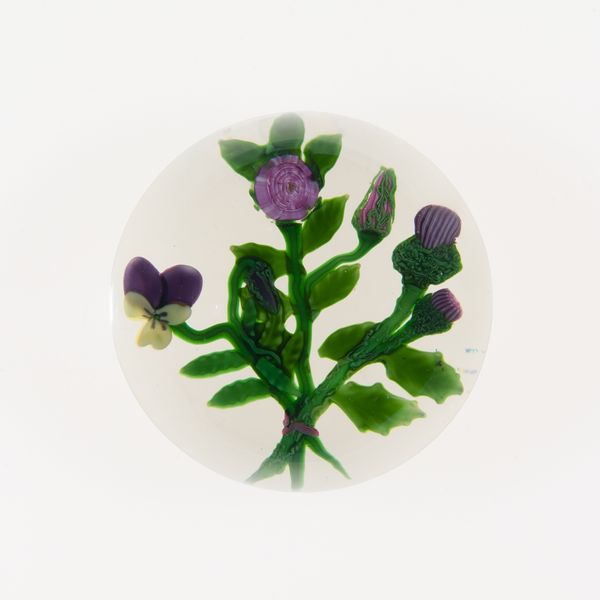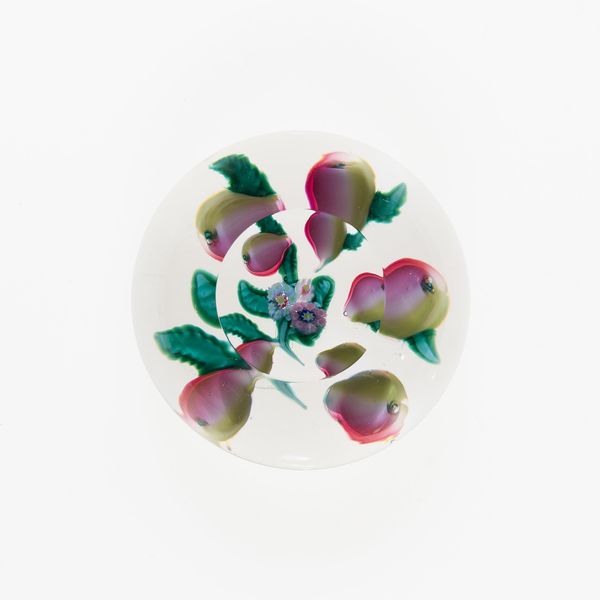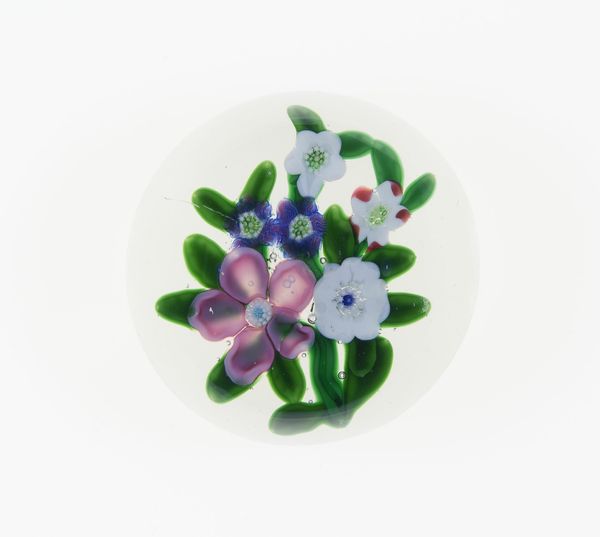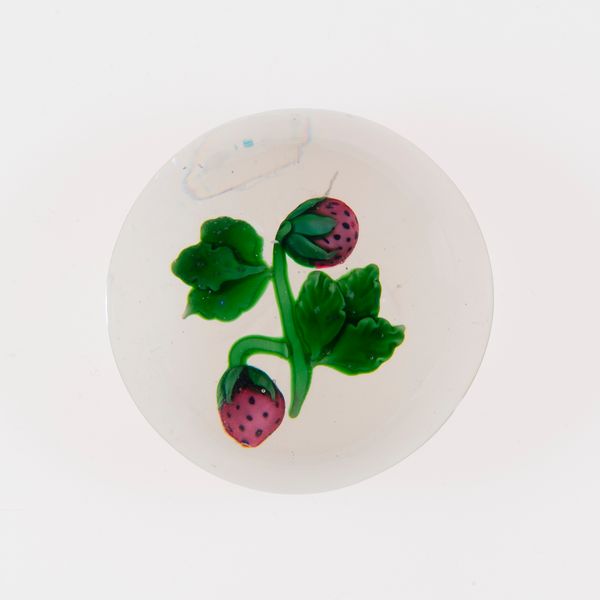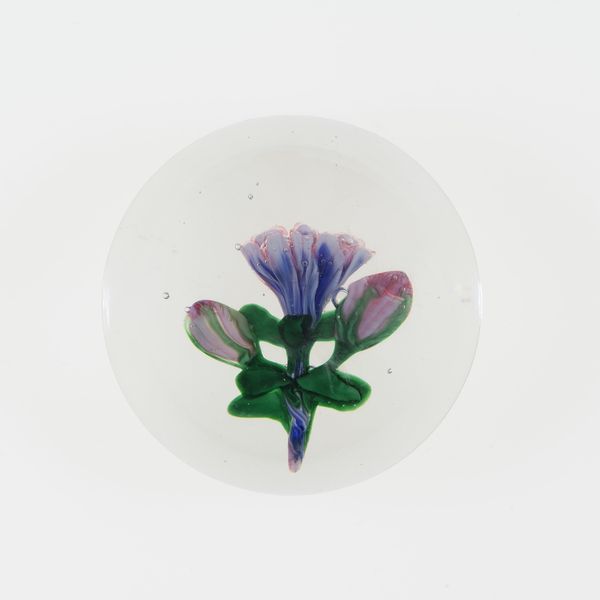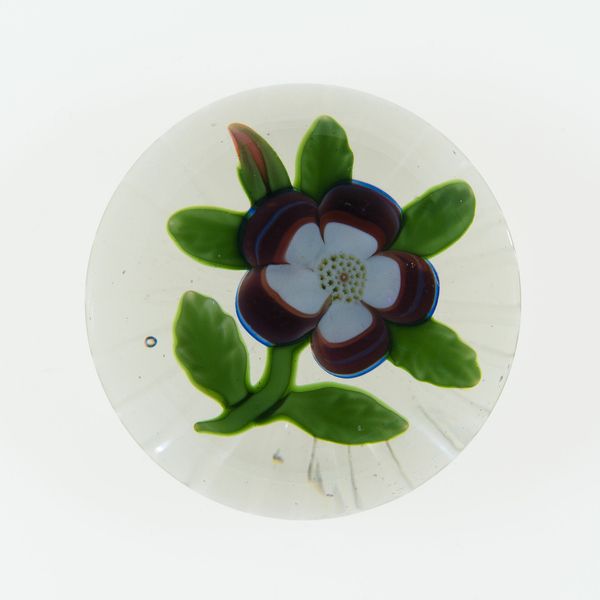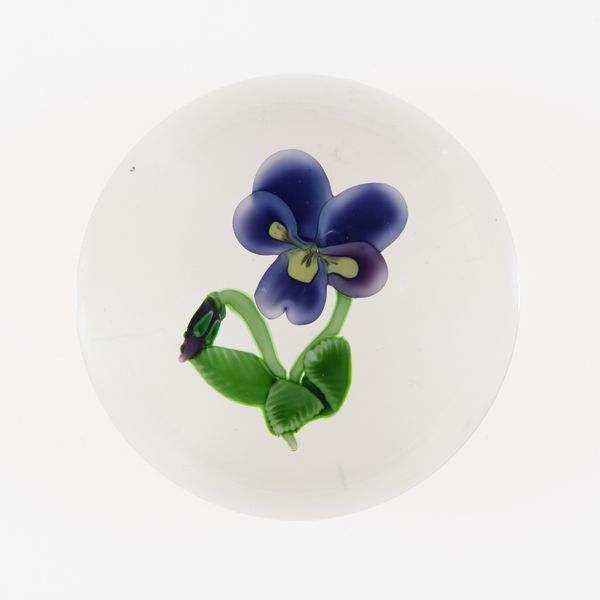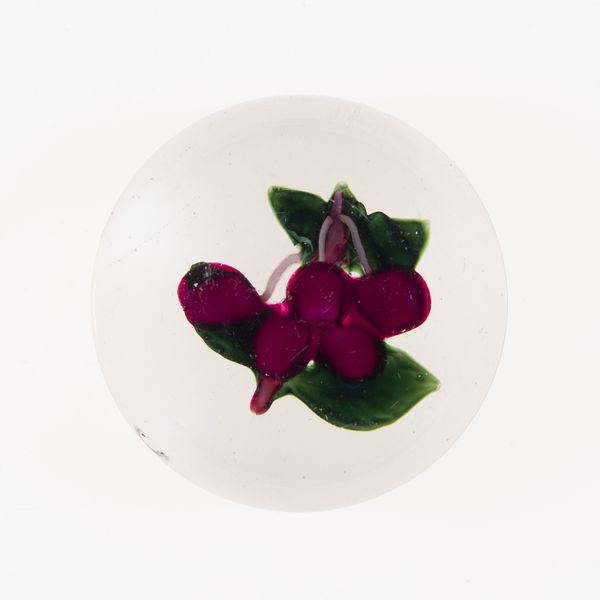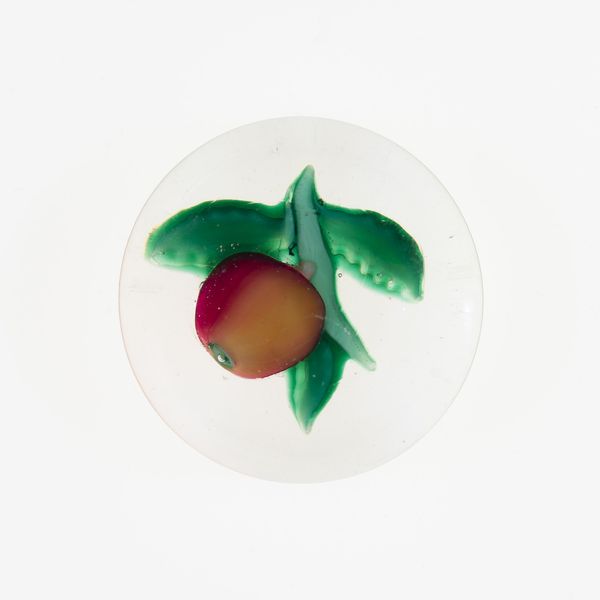
glass
#
glass
#
decorative-art
Dimensions: Diam. 6.1 cm (2 3/8 in.)
Copyright: Public Domain
Editor: Here we have "Paperweight," a delicate glass creation dating back to the 19th century by the Clichy Glasshouse. It’s currently housed at the Art Institute of Chicago. I’m immediately struck by how the miniature floral arrangement, frozen in glass, feels both fragile and permanent. What can you tell me about this work? Curator: It’s interesting you mention that feeling of permanence. Consider the context of 19th-century Europe. The rise of industrialization dramatically altered societal structures. Paperweights like these became fashionable precisely during an era defined by rapid societal changes and a growing fascination with natural sciences. How might this small object reflect deeper anxieties of its time? Editor: Perhaps it’s an attempt to capture and preserve something fleeting, like nature itself, in the face of progress. Curator: Precisely. But let's also think about access and class. The Clichy Glasshouse catered to a burgeoning middle class eager to acquire status symbols. Isn't it fascinating how the desire for "nature," a privilege often removed from working-class lives, was commodified into a decorative object? Also, think of women's roles during that period, often confined to the domestic sphere; wouldn’t the floral motif have specific resonance? Editor: So, the paperweight acts not just as decoration but also as a miniature embodiment of class and gender dynamics. The woman has nature right there. Curator: Exactly! It offers a small, controlled piece of "nature" within the confines of their homes. The fragility and the craft speak volumes. Do you notice the color palette? Editor: I see the delicate purples, greens, and whites...a bit muted? Curator: Those muted tones contrast sharply with the vibrant colors that were becoming available through new chemical dyes at that time. The choice, whether conscious or not, speaks to a specific aesthetic preference linked with romantic ideals of the past and an implicit rejection of gaudy modern hues. I find that very revealing. Editor: This has given me a lot to consider – thank you! It is definitely not just a decoration. Curator: The true beauty of art lies in understanding how seemingly simple objects encapsulate complex histories. Now you'll see them everywhere.
Comments
No comments
Be the first to comment and join the conversation on the ultimate creative platform.

